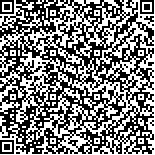| 引用本文: |
奚玉杰,奚玉鑫,白静,崔海栋,梁国英.基于“络病”理论探讨溃疡性结肠炎肠外表现病机[J].湖南中医药大学学报,2024,44(3):489-492[点击复制] |
|
| |
|
|
| 本文已被:浏览 859次 下载 430次 |
| 基于“络病”理论探讨溃疡性结肠炎肠外表现病机 |
| 奚玉杰,奚玉鑫,白静,崔海栋,梁国英 |
| (黑龙江中医药大学, 黑龙江 哈尔滨 150040;福建省南平市中医院, 福建 南平 353000;青岛卫疗生物科技有限公司, 山东 青岛 266000;黑龙江中医药大学附属第一医院, 黑龙江 哈尔滨 150040) |
| 摘要: |
| 溃疡性结肠炎(ulcerative colitis, UC)属于中医学“痢疾”“泄泻”“肠澼”等范畴,是一种迁延难治的消化系统疾病,还可引起皮肤、骨关节、肝胆等多种肠外系统及组织器官病变,给患者身心健康带来极大影响。但UC肠外表现的病机尚未形成统一的认识,为其临床诊疗带来一定阻碍。根据络脉系统网络全身、灌渗气血的特性,提出基于“络病”理论探究UC肠外表现的病机,认为脾虚为本,损伤肠络为UC发生的病机关键,湿、热、瘀、毒入络,浸淫他脏,而出现诸多肠外表现。在此基础上阐述UC患者出现皮肤、关节、肝胆病变的病变机制,总结皮肤病变的病机为肺脾失调、络虚邪郁,关节病变的病机为脾肾亏虚、外邪壅络,肝胆病变的病机为湿热入(肝)络、气血失调,以期为UC肠外表现的诊疗提供中医特色新思路。 |
| 关键词: 溃疡性结肠炎 痢疾 肠外表现 络病 肠络 病机 理论探讨 |
| DOI:10.3969/j.issn.1674-070X.2024.03.022 |
| 投稿时间:2023-12-10 |
| 基金项目:全国中医临床特色技术传承骨干人才培养项目(国中医药人教函〔2019〕36号);黑龙江中医药大学合作科研项目(22012210013)。 |
|
| Pathogenesis of extraintestinal manifestations of ulcerative colitis based on the theory of "collateral disease" |
| XI Yujie,XI Yuxin,BAI Jing,CUI Haidong,LIANG Guoying |
| (Heilongjiang University of Chinese Medicine, Harbin, Heilongjiang 150040, China;Fujian Nanping Hospital of Chinese Medicine, Nanping, Fujian 353000, China;Qingdao Weiliao Biotechnology Co., Ltd., Qingdao, Shandong 266000, China;The First Hospital of Heilongjiang University of Chinese Medicine, Harbin, Heilongjiang 150040, China) |
| Abstract: |
| Ulcerative colitis (UC) belongs to the categories of "dysentery", "diarrhea", and "hemafecia" in TCM. As a kind of persistent and refractory digestive system disease, UC can also cause lesions of skin, bone joint, liver, gallbladder, and other extraintestinal systems, tissues, and organs, exerting great impacts on the physical and mental health of patients. However, a consensus on the pathogenesis of UC extraintestinal manifestations (EIMs) has not been formed yet, which brings certain obstacles to its clinical diagnosis and treatment. Considering that the collateral system networks with the whole body, through which qi and blood permeate all parts of the body, it is proposed to explore the pathogenesis of EIMs of UC based on the theory of "collateral disease". It is believed that spleen deficiency, which is the root, and damage of intestinal collaterals are the key to the pathogenesis of UC. Dampness, heat, static blood, and toxin invade the collaterals and spread to other organs, resulting in many EIMs. On this basis, the pathological mechanisms of lesions of skin, joint, liver, and gallbladder in UC patients have been expounded. The pathogenesis of skin lesions is summarized as the lung and spleen disorders causing collateral emptiness, and thus contributing to the retention of the pathogenic factors in the collaterals; the pathogenesis of joint disease is summarized as the spleen and kidney deficiency and the invasion of the collaterals by exogenous pathogenic factors; the pathogenesis of liver and gallbladder diseases is summarized as the obstruction of dampness-heat in the (liver) collaterals and disharmony of qi and blood. This paper aims to provide new ideas with TCM characteristics for the diagnosis and treatment of EIMs of UC. |
| Key words: ulcerative colitis dysentery extraintestinal manifestations collateral disease intestinal collaterals pathogenesis theoretical discussion |
|

二维码(扫一下试试看!) |
|
|
|
|




